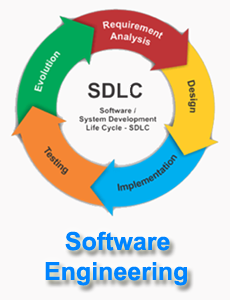Software Metrics
What is Software Metrics
The standard of measure for the estimation of quality, progress and health of the software testing effort is called software metrics. It can be divided into three groups: product metrics, process metrics, and project metrics.
The product characteristics like size, features of the design, complexity, performance, level of quality, etc., is described using product metrics. In contrast, software development and maintenance are improved using process metrics. The project's characteristics and execution are described by project metrics whose examples include the count of software developers, cost, etc.
The quality of the ongoing process is identified, implementation of any improvements and prediction of quality of the software after the implementation phase is over is all done by using software metrics. Project managers and leads can review the decisions made during the project's development phase by using software metrics and then making plans to do the changes. But it is not meant only for the higher-level management like the leads and project managers, any individual can use it for the sake of the team, and effective results can be obtained.
Types of Software Metrics
- Process Metrics
- Product Metrics
- Internal Metrics
- External Metrics
- Project Metrics
Process Metrics
Process metrics are used to measure the characteristics of the process of software development. The example includes the efficiency of detection of fault etc. The characteristics of the methods, tools, and techniques used for software development can be measured using process metrics.

Product Metrics
The characteristics of the software product are measured using product metrics. Some of the important characteristics of the software are;
- Software size and complexity
- Software reliability and quality
Internal Metrics
The properties which are of great importance to a software developer can be measured using the metrics called internal metrics. An example is a measure of Lines of code (LOC).
External Metrics
The properties which are of great importance to a user can be measured using the metrics called external metrics. An example is portability, reliability, usability, etc.
Project Metrics
The progress of the project is checked by the project manager using the metrics called project metrics. Various metrics such as time, cost, etc., are collected by using the data from the projects in the past, and they are used as an estimate for the new software.
Advantages of Software Metrics
- The design methodology of the software systems can be studied comparatively.
- The characteristics of various programming languages can be studied for analysis and comparison using software metrics.
- The software quality specifications can be prepared using software metrics.
- The compliance of requirements and specifications of software systems can be verified.
- The effort that needs to be put into the development and design of software systems can be inferred.
- The complexity of the code can be determined.
- The decision of whether to divide a complex module or not can be done.
- The utilization of resource managers to their fullest can be guided.
- Design trade-offs and comparing maintenance costs and software development costs can be done.
- The progress and quality of different phases of the software development life cycle can be measured, and feedback can be given to the project managers using software metrics.
- The allocation of resources to test the code can be done based on software metrics.
Disadvantages of Software Metrics
- It is not easy to apply metrics in all cases. It is difficult and expensive in some cases.
- It is difficult to verify the validity of historical or empirical data on which the verification and justification.
- Software products can be managed, but the technical staff's performance cannot be evaluated using software metrics.
- The available tools and the working environment is used to define and derive the software metrics, and there is no standard in defining and deriving them.
- Certain variables are estimated based on the predictive models, and they are not known so often.

